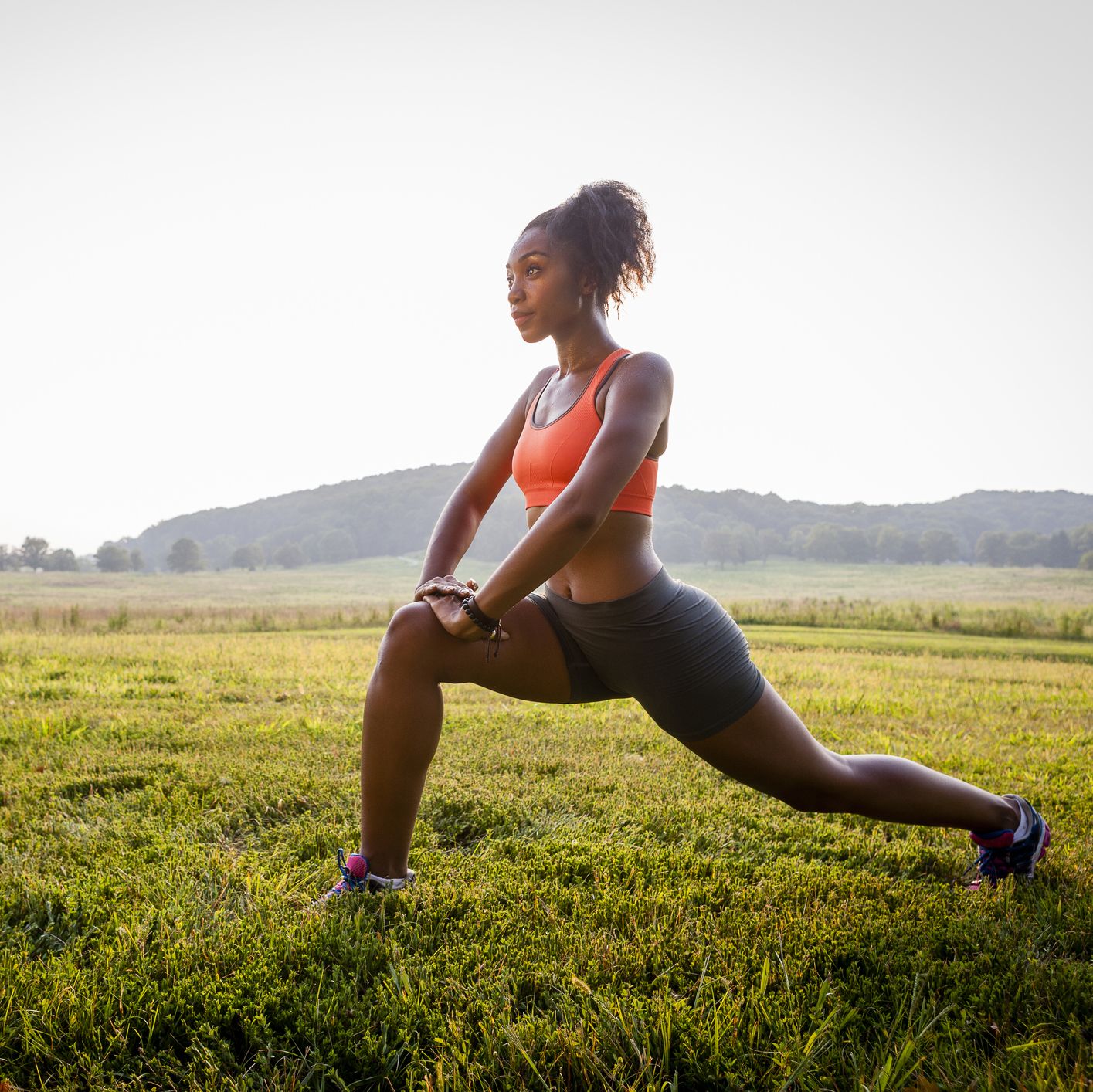Pedometers
A pedometer is a beeper-sized device you wear on your waist that counts the number of steps you take. There are two types of pedometers, spring-levered and piezoelectric. Spring-levered pedometers use a spring-suspended horizontal lever arm that moves up and down in response to the movement (vertical accelerations) of your hips as you walk or run. The movement opens and closes an electrical circuit, and as the lever arm makes contact, a step is registered. Spring-levered pedometers must be placed in a vertical plane, perpendicular to the ground, in order for them to work. They don't work if they tip forward to a horizontal plane. Piezoelectric is a material that generates an electric charge when it is mechanically deformed. Piezoelectric pedometers use a horizontal cantilevered beam with a weight on the end that compresses a piezoelectric crystal when subjected to movement like walking (acceleration). This generates a voltage proportional to the acceleration and the voltage oscillations are used to record steps. Got that? Pedometers work when you dance, climb stairs, or walk outdoors or on a treadmill, but they don't work if you're biking, skiing, rowing, or swimming. Pedometers provide objective measurement of physical activity and are one potential remedy to the problem of inaccurate activity recall and they can also be fun!

What are the benefits of stepping out with pedometers?
The benefits of exercise are well known. Decreased risk of and management of chronic diseases like diabetes and heart disease, improvements in bone density, decreases in blood pressure, reduction in certain types of cancer, increases in muscle strength and endurance, alleviation of symptoms of depression, and elevation of mood are just some.
The quantity of exercise necessary to accrue these benefits is also well known. There are two national recommendations to choose from. First, the Surgeon General recommends 30 minutes or more of moderate-intensity physical activity on five or more days per week to improve health and fitness. You can accumulate it in 10- to 15-minute bouts throughout the day or do it all at once. "Moderate intensity" physical activity means you feel warm and slightly out of breath when you do it. And second, the American College of Sports Medicine recommends a more formal, workout prescription of 20-60 minutes of continuous activity, three to five times a week (at 60-90% of maximum heart rate reserve) and two to three days of resistance training. Thirty minutes of exercise is good for you, but objective measurement of how much activity you actually do can be elusive. Research shows that it's possible to overestimate your activity level or calorie expenditure by as much as 51%! Overestimating your activity or calorie expenditure level can have undesirable consequences; it can mislead you into thinking that you're doing enough physical activity to improve your health or that you're doing enough activity to burn off extra calories from a weekend binge. Overestimation of physical activity is also a problem for exercise scientists; subjects who overestimate their activity level confound the results of research.
Are pedometers accurate?
The accuracy of pedometers has been carefully studied because they are frequently used in studies and researchers demand to know if they are reliable and accurate. Research shows that pedometers tend to count steps more accurately at speeds greater than 3 miles per hour (mph) than at slower speeds. Accuracy can exceed 96% when speeds exceed 3 mph, whereas the accuracy drops to between 74% and 91% at speeds from 2 mph to 3 mph, and it drops even further to between 60% and 71% at speeds below 2 mph. The error has to do with the insensitivity of pedometers to detect steps when people shuffle or drag their feet at slow speeds. Detectable vertical movement of the hips is necessary for pedometers to work well.
Are pedometers accurate for measuring distance and calories?
Pedometers don't measure distance or calories burned accurately. They can be off by as much as 10% with distance and 30% with calories, which means the error could be half a mile if you walk five miles and 150 calories if you burn 500. They tend to overestimate distance at slower speeds, underestimate distance at faster speeds, and they're simply not sensitive or smart enough to detect and factor in all the variables that determine how many calories you burn when you exercise. I recommend a simple pedometer that measures only steps because of these errors. Tell a salesman who wants to sell you a pedometer with all the bells and whistles that you prefer the simple one. The bells and whistles will cost you extra money for features that don't work.
How many steps should I take?
The precise number of steps per day necessary for health and fitness is unknown. Ten thousand steps per day is the popular recommendation, and there is accumulating evidence that this number of steps is associated with health benefits (lower blood pressure, improvements in blood glucose and insulin sensitivity), but it may not be appropriate for everyone (children, older adults, and individuals with chronic diseases). As for meeting the Surgeon General and ACSM guidelines by accumulating 10,000 steps per day, research suggests that the chances are good but it is not a guarantee. Until we know more it's reasonable to shoot for 10,000 steps per day if you are a healthy adult.
How do I go about getting started with my first pedometer?
I recommend wearing your pedometer from the moment you wake up in the morning until the moment you go to sleep at night for one to two weeks, record the steps, and then calculate your average daily steps. Once you know your average, you can make efforts to increase your average daily count by 250-500 each week until you reach an average of 10,000 steps per day.
How far am I walking? How many steps are there in a mile?
Figure 1,900-2,600 steps per mile depending on your stride length. Stride length is dependent on (1) your leg length, and (2) how fast you're moving. It's longer when you jog or run, compared with walking, which means your step count will be different for the same distance depending on your mode of activity. For example, it could take 2,400 steps to walk a mile and 2,100 steps to jog it. Power- and speed-walkers take smaller, more rapid steps to go faster, and so they will take more steps in a mile than when walking slower. Likewise, you will take more steps walking uphill than when walking flat and so you need to consider that when assessing your activity level with a pedometer. Set your pedometer to zero and walk, jog, or run a measured mile, or half a mile and multiply by two, to determine how many steps you take per mile for each mode of activity that you're interested in.
Stay In The Know
Get exclusive access to fashion and beauty trends, hot-off-the-press celebrity news, and more.
How do I position my pedometer on my body?
Pedometers should be worn on your waist in a line straight up from the middle of your knee. They can be worn on either side of the body. You can wear it on your underwear if you're wearing a dress without a waist band, and you can wear it on your sock if you have excess abdominal fat and can't keep your spring-levered pedometer upright. My clients who can't keep the pedometer vertical on their waistband have had good results wearing their pedometer on their sock.
SO GET WALKING!!!
-
 I Used Nordstrom’s Sale Section to Craft 7 Perfect Summer Outfits
I Used Nordstrom’s Sale Section to Craft 7 Perfect Summer OutfitsThese are formulas you can rely on.
By Brooke Knappenberger
-
 Your Syllabus Guide to the 'Weak Hero Class 2' Cast—Meet the Rising K-Drama Stars Playing the Students of Eunjang High
Your Syllabus Guide to the 'Weak Hero Class 2' Cast—Meet the Rising K-Drama Stars Playing the Students of Eunjang HighSo many exciting names join Park Ji-hoon in the second season of the Netflix hit.
By Quinci LeGardye
-
 Prince William and Kate Middleton "Continue to Push Boundaries"
Prince William and Kate Middleton "Continue to Push Boundaries""They definitely have a different dynamic compared to other royal couples."
By Kristin Contino
-
 Senator Klobuchar: "Early Detection Saves Lives. It Saved Mine"
Senator Klobuchar: "Early Detection Saves Lives. It Saved Mine"Senator and breast cancer survivor Amy Klobuchar is encouraging women not to put off preventative care any longer.
By Senator Amy Klobuchar
-
 I'm an Egg Donor. Why Was It So Difficult for Me to Tell People That?
I'm an Egg Donor. Why Was It So Difficult for Me to Tell People That?Much like abortion, surrogacy, and IVF, becoming an egg donor was a reproductive choice that felt unfit for society’s standards of womanhood.
By Lauryn Chamberlain
-
 The 20 Best Probiotics to Keep Your Gut in Check
The 20 Best Probiotics to Keep Your Gut in CheckGut health = wealth.
By Julia Marzovilla
-
 Simone Biles Is Out of the Team Final at the Tokyo Olympics
Simone Biles Is Out of the Team Final at the Tokyo OlympicsShe withdrew from the event due to a medical issue, according to USA Gymnastics.
By Rachel Epstein
-
 The Truth About Thigh Gaps
The Truth About Thigh GapsWe're going to need you to stop right there.
By Kenny Thapoung
-
 The High Price of Living With Chronic Pain
The High Price of Living With Chronic PainThree women open up about how their conditions impact their bodies—and their wallets.
By Alice Oglethorpe
-
 I Used to Imagine Murdering the Men I Dated
I Used to Imagine Murdering the Men I DatedFalling in love helped me finally figure out why.
By Jessica Amento
-
 60 Workout Apps for Women Who Want Results (Without a Gym Membership)
60 Workout Apps for Women Who Want Results (Without a Gym Membership)Buying Guide Easy fitness plans you can follow without fear of judgment.
By Bianca Rodriguez